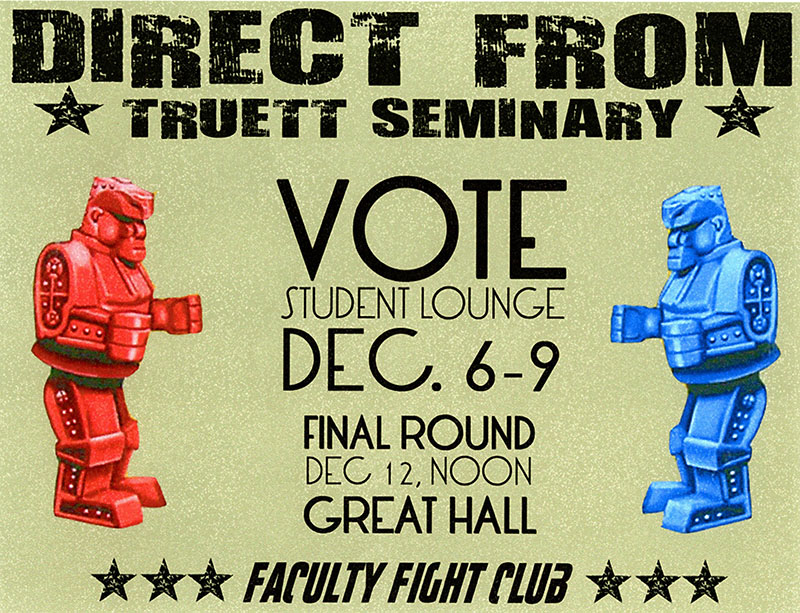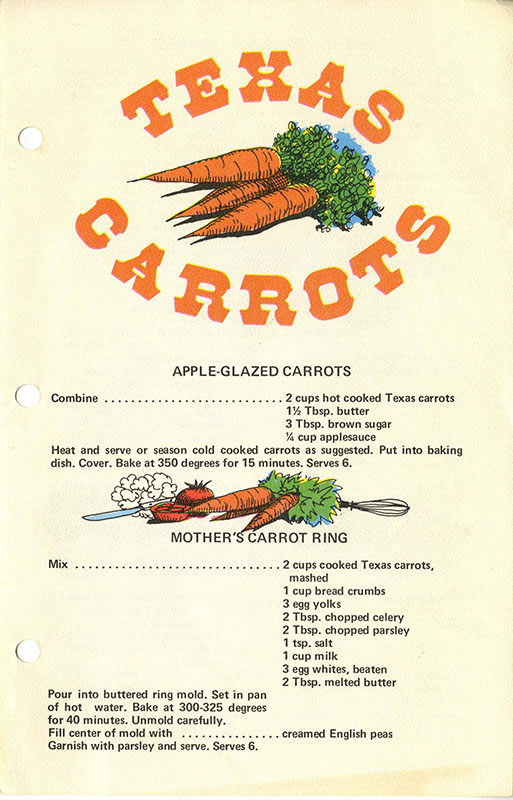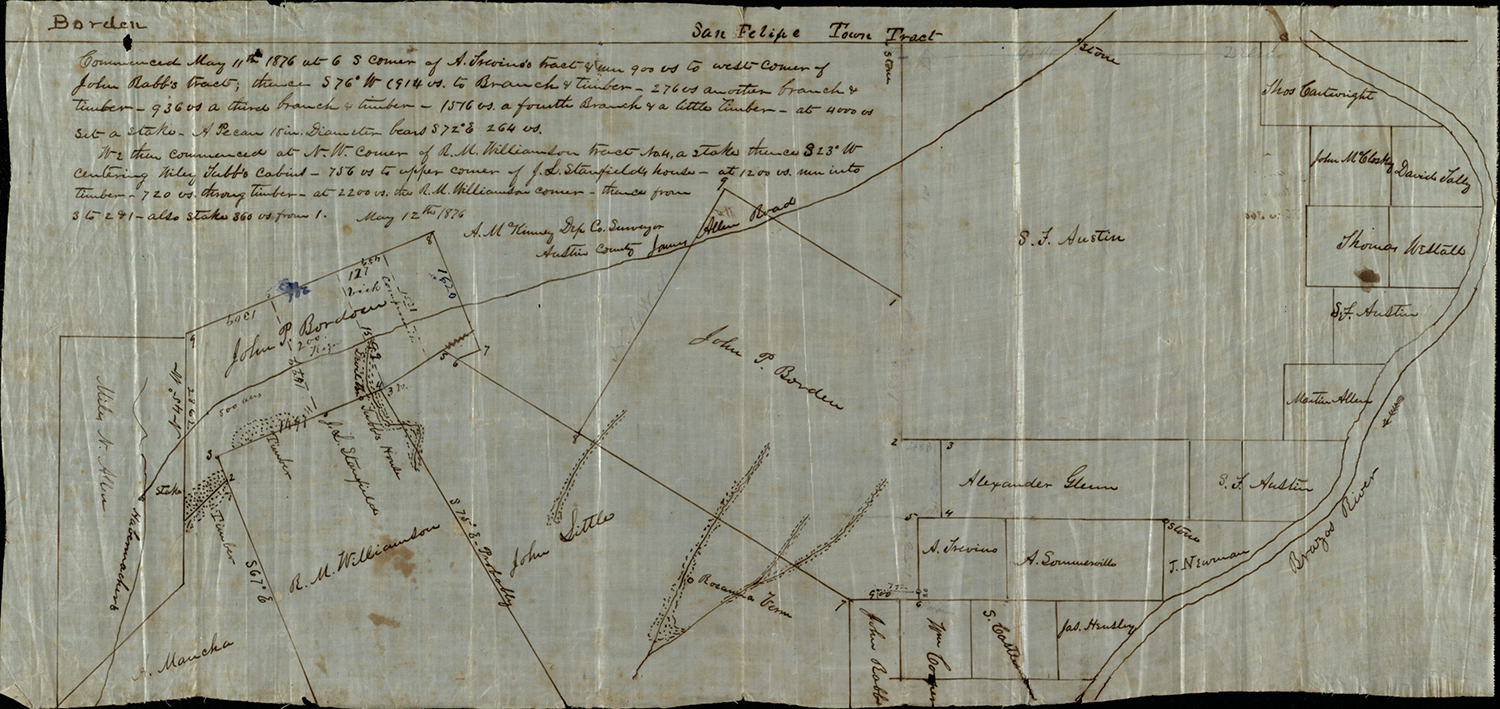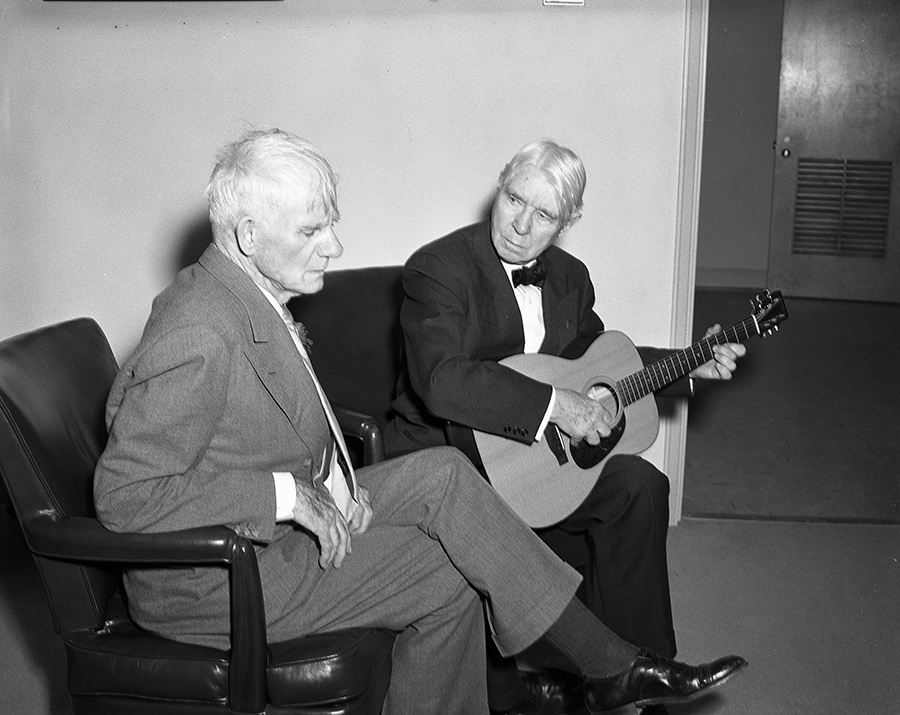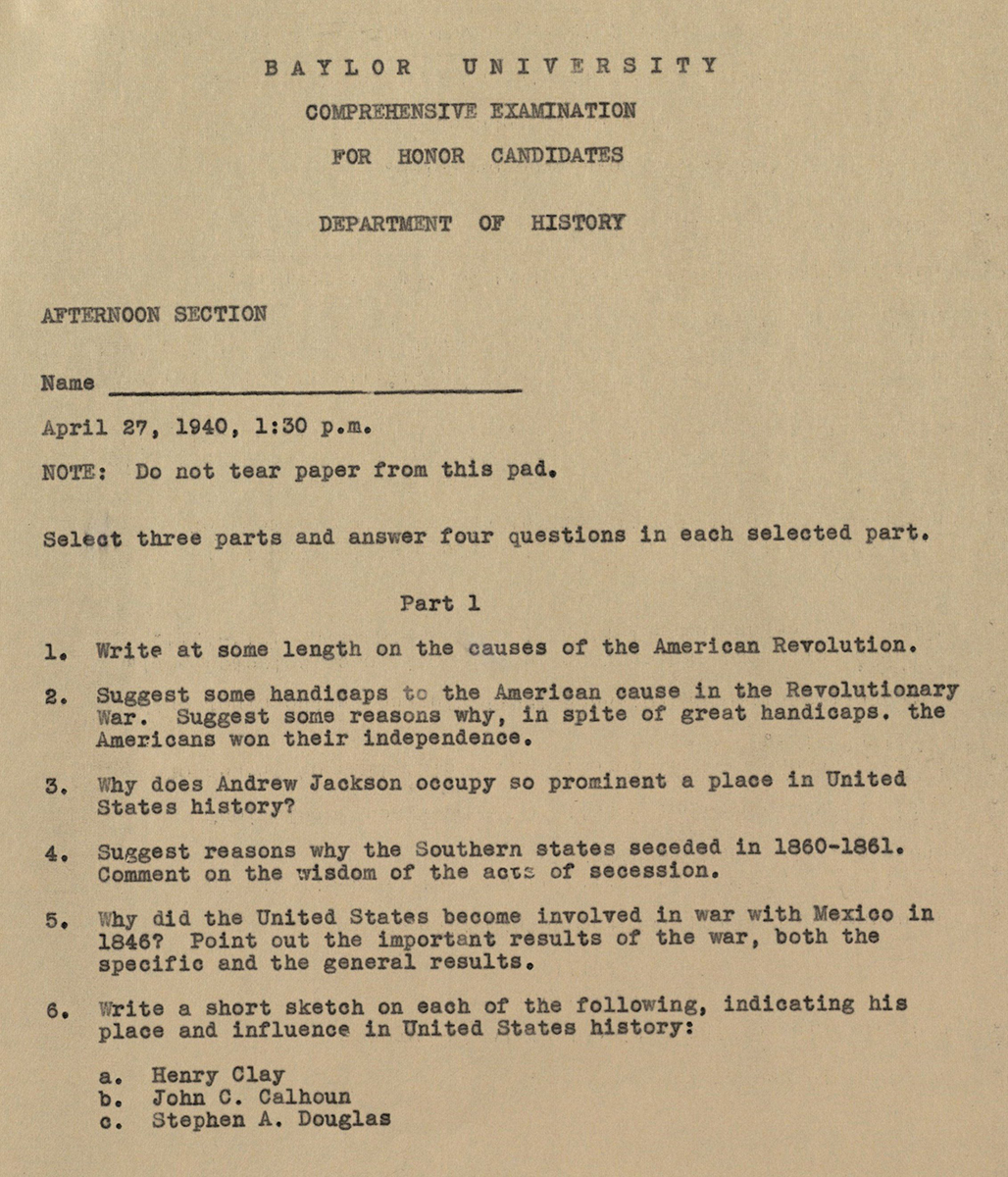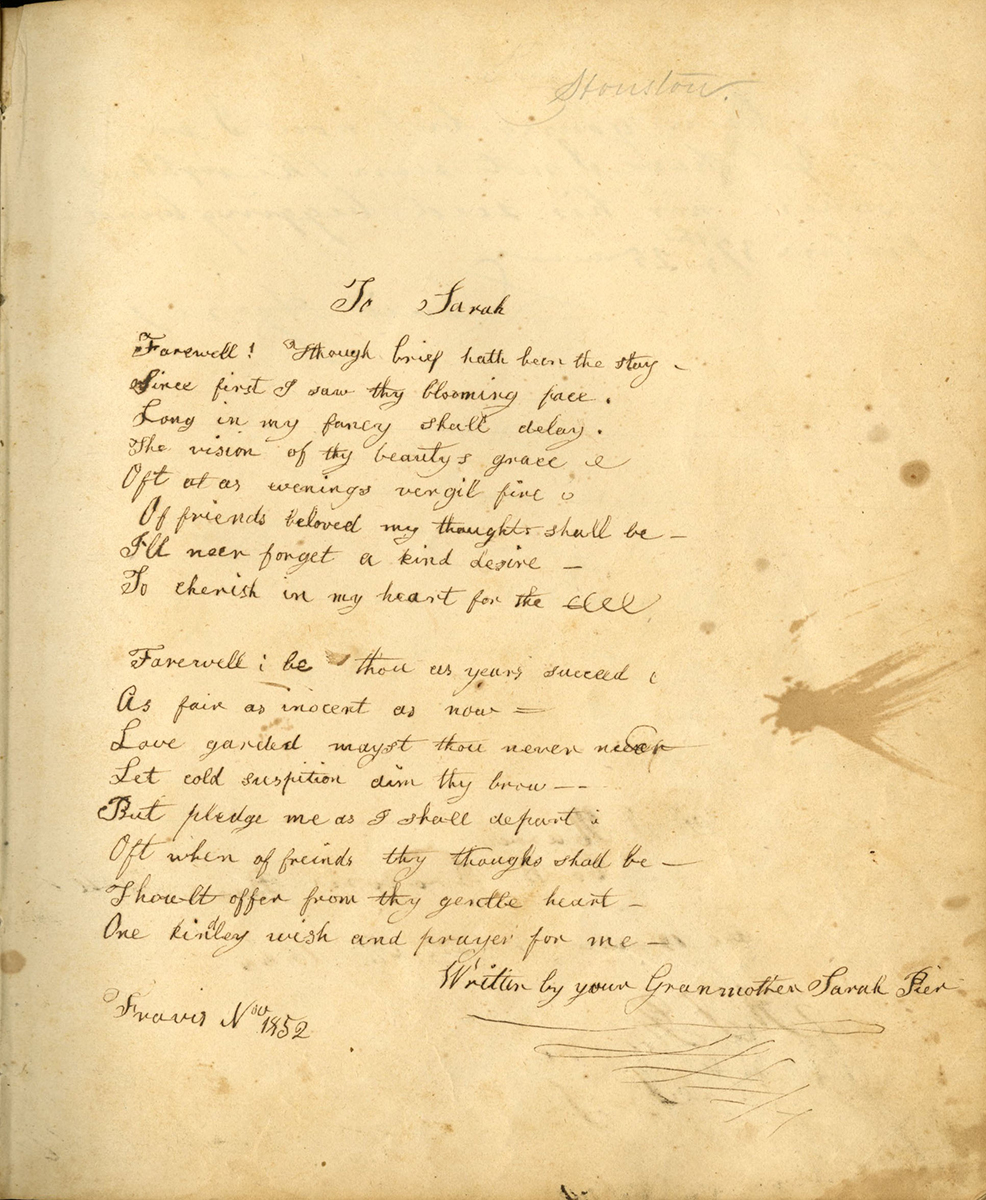 Wondering what you want for lunch today? After this post, you’ll want cornbread and coffee cake…at least we do! As we prepare for our Cooking in Texas event, we asked our panel to share some of their favorite recipes with us, and boy, do they sound good! Last week we shared a few entries, and here are a couple more. If these tickle your taste buds, please join us at Bennett Auditorium on Thursday, February 12, at 3:30, to talk Texas food and cuisine—and then head to the Texas Collection reading room for a reception featuring regional cuisine prepared by culinary students at Texas State Technical College, and more foodie discussion.
Wondering what you want for lunch today? After this post, you’ll want cornbread and coffee cake…at least we do! As we prepare for our Cooking in Texas event, we asked our panel to share some of their favorite recipes with us, and boy, do they sound good! Last week we shared a few entries, and here are a couple more. If these tickle your taste buds, please join us at Bennett Auditorium on Thursday, February 12, at 3:30, to talk Texas food and cuisine—and then head to the Texas Collection reading room for a reception featuring regional cuisine prepared by culinary students at Texas State Technical College, and more foodie discussion.
Cooking in Texas panelists include Lisa Fain, founder of the award-winning blog “Homesick Texan”; Marvin Bendele, Executive Director of Foodways Texas; Mary Margaret Pack, private chef, food historian and author; Beth White, cookbook collector and author of Sweets and Meats: Early Texas Cook Books: 1855-1936; and moderator Addie Broyles, blogger and food editor for the Austin American-Statesman. The panel will discuss the quality, bounty, preparation and uniqueness of Texas food and cuisine.
Can’t make the event? Follow the discussion on Twitter at #cookingintx.
 Beth White lives in Houston and worked for thirty-seven years in the Texas Medical Center Library. She discovered that the most fascinating part of her job was building historical collections. Her day job was collecting bits and pieces of Houston’s medical history for the archive, while the fun after hours was collecting cookbooks to tell the stories of Texas cooks and the communities in which they worked. Growing up in Fort Worth, she remembered Sunday barbecue at Walter Jetton’s and special lunches in the Zodiac Room in Neiman Marcus. She started collecting by gathering a few Fort Worth and Helen Corbitt titles, along with a large number of American cookbooks. Soon Houston and Dallas cookbooks were added. Then she began trying to gather something from each of the 254 Texas counties
Beth White lives in Houston and worked for thirty-seven years in the Texas Medical Center Library. She discovered that the most fascinating part of her job was building historical collections. Her day job was collecting bits and pieces of Houston’s medical history for the archive, while the fun after hours was collecting cookbooks to tell the stories of Texas cooks and the communities in which they worked. Growing up in Fort Worth, she remembered Sunday barbecue at Walter Jetton’s and special lunches in the Zodiac Room in Neiman Marcus. She started collecting by gathering a few Fort Worth and Helen Corbitt titles, along with a large number of American cookbooks. Soon Houston and Dallas cookbooks were added. Then she began trying to gather something from each of the 254 Texas counties
Sometime in the late 1980s as the bookshelves were overflowing, Beth realized that she might have the beginnings of a nice collection but it had to be controlled. Since many cookbooks were produced for the 1986 Sesquicentennial, that became her target to try to limit the collection. Then, in 1995, eBay began. She, along with many other collectors and librarians, realized its potential for developing significant collections. The ease of access through the Internet meant perusing auctions for hundreds of books each day and meant a collection could be built within a decade rather than over a lifetime. When Beth retired in 2010, one of her goals was to disperse the collection. By December of that year, Baylor’s Texas Collection had been chosen to receive the titles.
Country Corn Bread (Adapted from The Only Texas Cookbook by Linda West Eckhardt)
Ingredients
- 3 tbsp. bacon grease (some tiny bits of bacon will not hurt)
- ½ cup stone ground yellow cornmeal
- ½ cup yellow cornmeal
- ½ cup flour
- ½ tsp. salt
- ½ tsp. baking soda
- ½ tsp. baking powder
- 1 tbsp. sugar
- 1 cup buttermilk, well shaken
- 1 egg
Directions
- Preheat oven to 500 degrees.
- Place bacon grease in 9-10” iron skillet and heat until grease is very hot.
- Mix dry ingredients, then add buttermilk.
- Stir well and add egg.
- Mix well and pour hot grease into batter. Stir quickly.
- Sprinkle several drops of water into skillet. It should be hot enough to make water sizzle.
- Add batter and put into the oven.
Cook until the top is dull and feels firm when you touch it. Around 8-10 minutes.
Turn on the broiler and run cornbread under the heat until the top is speckled with brown. Serve warm. If any is left, the cold cornbread can be toasted and served with butter and jam.
~
 Addie Broyles is a writer, photographer, blogger and quilter based in Austin, Texas.
Addie Broyles is a writer, photographer, blogger and quilter based in Austin, Texas.
As a food writer for the Austin American-Statesman, she covers everything from cookbooks and food trends to farmers markets, food entrepreneurs and culinary culture in the Wednesday food section, where she has a weekly column called Relish Austin.
At home, when she’s not chasing after her two young sons, the Ozarks native and University of Missouri graduate writes about women and food at The Feminist Kitchen and is the special projects chair of the Austin food Alliance.
In April 2013, the History Press published The Austin Food Blogger Alliance Cookbook, a community cookbook that Broyles spearheaded and whose production she oversaw.
Addie won a National Headliner Award in 2012 and her Relish Austin blog has won honors from the Society of Features Journalism and the Texas Associated Press Managing Editors.
In 2011, Addie was named by Tribeza magazine as one of the top 10 Austinites to watch, and for three years in a row, readers of the Austin Chronicle have voted her the top food writer in the city. CNN’s Eatocracy blog has a food crush on her, and she has been a judge for the Statesman Social Media Awards since 2009.
Her freelance work has appeared in Dwell, The Guardian, Metropolis and Food Network Magazine.
Gaga’s Coffeecake
For batter:
- 2 1/2 cups all-purpose flour
- 1 1/2 tsp. baking powder
- 1 tsp. salt
- 1/2 tsp. ground nutmeg
- 1 tsp. ground cinnamon
- 3/4 cup sugar
- 1/4 cup softened butter
- 2 eggs
- 1 cup milk
For topping:
- 1/4 cup softened butter
- 3/4 cup brown sugar
- 3 tbsp. all-purpose flour
- 1/2 tsp. ground cinnamon
Directions:
- Preheat oven to 350 degrees.
- Mix together flour, baking powder, salt, nutmeg, cinnamon and sugar.
- Work in the softened butter, eggs and milk.
- In another bowl, lightly mix together the topping ingredients.
- Pour half of the batter into a greased 8×8-inch glass or metal pan. (A bread loaf pan will also work.) Sprinkle half of the topping mixture on the batter and then pour the rest of the batter on top.
Add the last of the topping mixture and then bake for about 35 minutes. Serves 8.



